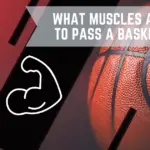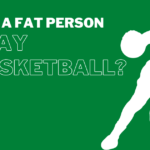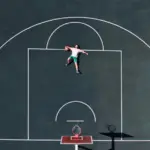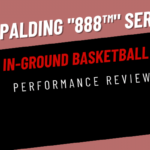If you’re a basketball player, you know how demanding the game is and how much people struggle to succeed. You won’t find a shortcut or a magic solution that will make the process easy, but you can make it easier with squat variations. There’s a bunch of training techniques, but squat variations are a really comprehensive way to address a lot of issues, and to prevent them from happening as well. Squat variations will target a lot of different muscle groups so you’ll get functional strength that translates into explosive movements, effective rebounds, and stable defense.
But you won’t just get stronger leg muscles; they will also improve your balance, prevent injuries, and improve your jump. Stick around and let’s see what are the most effective options!
Squat Mechanics and Basketball
Every move counts in basketball, from dribbling to shooting, and if you’re trying to find a way to improve your performance, squats are the way to go. Squatting isn’t just going up and down – it helps you push off the ground to jump higher, sprint faster, and maneuver better on the court. The concentric phase, where you push the weight up, is especially important for basketball players. This is the part where your leg muscles (particularly quads and glutes) work together to produce force and that force makes it possible to explode off the ground for rebounds, dunks, and quick defensive moves.
Unfortunately, squatting isn’t always smooth sailing and if you decide to give them a try (which you really should!), be prepared for some sticking points. You’ll feel like you’ve hit a wall and struggle to push through, and this happens most often around the midpoint of the squat, where your muscles are under the most pressure. Handling them isn’t easy, but it’s not impossible and the key is finding out what your sticking point is, why it happens, and then you can find out how to solve it. Generally, it’s always useful to work on your hip and knee extension during the concentric phase.
Top Squat Variations for Basketball Players
Squats will do wonders for your lower body (some variations will benefit your upper body as well) and they can improve your performance. Of course, proper form is always a must so make sure to take your time to really master it before you include heavy weights into your routine.
Good squat form will make your exercise effective and it will prevent injuries. Incorrect squat form, on the other hand, can be an invitation to a range of injuries (e.g., lower back strain, knee injuries, and wrist strain/injuries) that you’d rather avoid or prevent. Especially since you’re a basketball player, and improper handling of the barbell during a squat can damage your wrists, and prevent you from shooting, passing, or dribbling effectively. You want the squats to improve your game, not hinder your progress and prove an obstacle while trying to score those points.
You might struggle with getting the depth perfect, especially in the beginning and you’ll get the hang of it if you don’t give up. But as your range of motion and flexibility improve, make sure not to go too far and squat too low because that can strain your lower back, knees, you can lose balance… Basically, it’s a no-no.
Low bar squat
The low stance barbell squat is a good exercise for basketball players. Incorporating low bar squats into a basketball training regimen can lead to significant improvements in strength, stability, and overall performance on the court. Before you start training, it is important to familiarize yourself with the basic rules to avoid possible injuries. If you feel your wrist hurt while doing this exercise, we recommend that you first familiarize yourself with the rules of proper performance, or even better, follow the instructions of your trainer.
Dumbbell Step-Ups
This is a very effective, knee-friendly exercise and it’s ideal for players who want to strengthen their legs but they don’t want to put too much stress on their joints. This movement mimics the dynamic stepping motions that you’ll often see in basketball and it’s a very functional exercise for your performance.
Zercher Squat
The Zercher squat is done by cradling the barbell in the crooks of your elbows and, unlike traditional back squats (which focus on your lower body), the Zercher Squat gives your legs a fantastic workout while still engaging your upper back muscles, your biceps, and forearms. Along with that, the way the weight is positioned challenges your core and torso, which helps develop stability and power you need for explosive movements.
Bulgarian Split Squat
Since this exercise targets one leg at a time, you get a more balanced strength development and it can address any asymmetries and imbalances that may exist and that can cause injuries. Bulgarian split squats are really useful for basketball players because they improve stability and balance, which is essential if you want to keep control during quick changes in direction. You can do these with dumbbells or a front-loaded barbell.
Kang Squat
Sounds kind of like a kangaroo, right? That’s no surprise because that is where the name comes from; Kang squats resemble the way kangaroos move. This variation will benefit players who want to improve the flexibility of their hamstrings and activate the posterior chain. Kang squat emphasizes the eccentric phase, where the muscles lengthen under tension, so it helps prevent injuries and promotes greater explosiveness and agility on the court.
Landmine Squat
Some basketball players deal with back issues, and the landmine squat is a great choice for them. It’s also a good option for anyone looking to freshen up their squat routine. It uses an anterior loading position with the weight anchored in front of the body, so it encourages good posture and engages the core. This contributes to overall stability and it can help prevent injuries. And added to that, the landmine squat also helps with shoulder development and encourages good posture.
FAQ
What is the best time to include squat variations into training?
You should include them in a structured training program and do them either on leg days or on days when you’re doing full-body workouts. It’s great to do them at the beginning of the session, when you have more energy because squats are demanding and they need a lot of effort.
Can squat variations improve jump?
Yes, and the improvements are pretty significant. Since they target the muscles that are involved in jumping, squat variations will improve the strength, power, and explosiveness in your lower body.
Conclusion
So, what’s the key thing to take away from all this? Apart from the fact that Kang squats are named after one of the most adorable creatures in the world, there are two things to keep in mind. One – squat variations can do a lot for your performance. Two – don’t rush into squatting like a pro right away. Take it slow, learn the proper form and crank up the intensity gradually. Once you learn how to do them properly, all you need to do is watch your game level up like crazy. Well… that might not be all you need to do because first you’ll need to push through some butt-kicking training sessions, but hey, but it will be so worth it!
Do you have any tricks up your sleeve for improving your squat routine? Which of these variations will you try out first and why? Are there any other exercises you do that you see improvements from?
Drop a comment and let’s chat!
References:
1. Federico Nigro and Sandro Bartolomei “A Comparison Between the Squat and the Deadlift for Lower Body Strength and Power Training,” Journal of Human Kinetics, 2020 Jul; 73: 145–152. Published online 2020 Jul 21.
2. Health Promotion Board (HPB) “Prevent Injuries with Proper Form During Workouts,” Singapore University Health Center, https://www.nus.edu.sg/uhc/articles/details/prevent-injuries-with-proper-form-during-workouts (accessed March 22nd, 2024)

Clyde Jackson III is a basketball coach and the founder of GCBC Basketball, a basketball-related learning and informational website that focuses on helping young players develop their skills on and off the court. With over 15 years of coaching experience, Clyde has worked with players of all ages and skill levels, from beginners to professionals.













